
- Jun 17, 2025
Ethiopia's Most Valuable Export: A Comprehensive Analysis of Coffee
In the international coffee market, Ethiopia, which is sometimes hailed as the origin of coffee, occupies a distinguished and unique status. Since its initial discovery in Ethiopia's Kaffa region centuries ago, coffee has evolved into much more than just a straightforward export; it is now an integral element of Ethiopian identity, culture, and way of life. Ethiopia's history, economy, and international reputation are shaped by coffee, according to Ethiopia Export Data.
Ethiopian coffee is one of the most sought-after coffees in the world because it is more than simply the beans; it represents a legacy of craftsmanship, biodiversity, and heritage. This blog examines Ethiopia's overall export and economic environment, offers comprehensive data on coffee exports, identifies important markets, evaluates the varieties and quality of Ethiopian coffee, examines Ethiopia Trade Data, and explores the strategic significance and potential of coffee for Ethiopia's economic growth in the future.
Overview of the Ethiopian Overall Economy and Exports
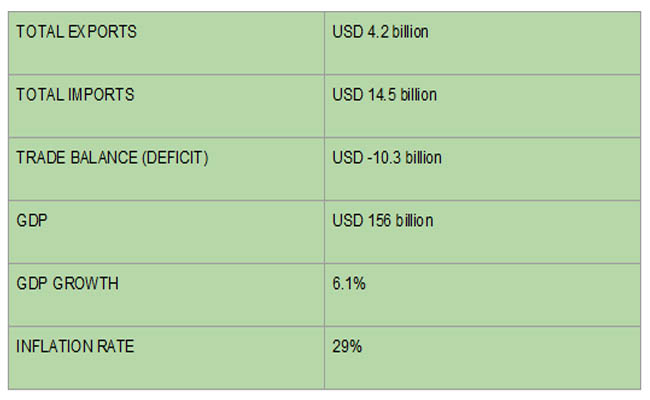
Coffee is Ethiopia's most important export, and the country's economy is mostly built on agriculture. Coffee makes up roughly 30–35% of overall export revenue, according to a report by Import Globals on Ethiopia Import Export Trade Data. Coffee continues to be a significant source of foreign cash and rural jobs despite a significant trade deficit.
Overview of Coffee Exports
For more than 15 million Ethiopians involved in coffee production, processing, and trading, coffee is more than simply a commodity; it is a national treasure and an essential source of income. Ethiopian coffee is valued worldwide for its distinctive flavors, organic production, and centuries-old artisanal techniques, according to the Ethiopia Import Custom Data Supplied by Import Globals. Numerous unique coffee profiles that are unrivaled elsewhere are produced by the nation's varied microclimates and elevations.
Ethiopia is the world's seventh-largest exporter of coffee, making it the country's main export product. About 30% of Ethiopia's total export earnings come from coffee exports, making it a vital component of the country's economic framework. It is grown on more than 500,000 hectares of land and employs millions of Ethiopians in its production, processing, and commerce, according to Import Globals' Ethiopia Import Trade Analysis. Because of its varied climate and geography, Ethiopian coffee is highly valued in the worldwide coffee market for its distinctive flavor profiles, which range from fruity and floral to peppery and earthy.
Data on Coffee Exports (2020–2024)
Ethiopia's coffee export values and quantities have been steadily increasing over the last few years, according to a study conducted by Import Globals on Ethiopia Export Data. An overview of Ethiopia's coffee exports from 2020 to 2024, expressed in USD billions, is shown in the table below. The global demand for premium coffee and solid international ties are the main drivers of Ethiopia's growing success in coffee exports, as evidenced by this upward trend.
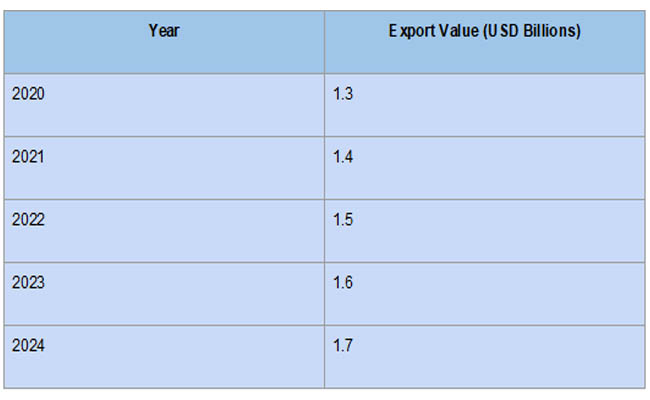

Important Destinations for Coffee Exports
Ethiopia sells coffee all over the world, with North America, Europe, and Asia being its main markets. The United States is the biggest buyer of Ethiopian coffee, followed by Germany, making them the country's most important trading partners, according to Ethiopia Import Export Global Data From Import Globals. A summary of Ethiopia's top coffee export markets, together with export values (USD billions), can be found below.
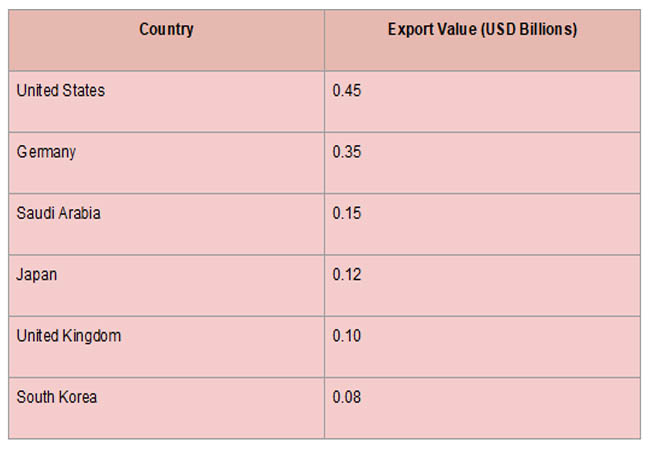
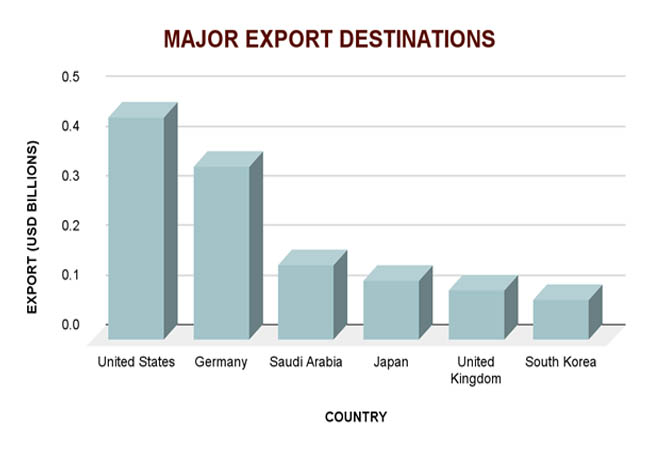
Top Coffee Exporters in the World
Ethiopia is one of the world's top suppliers of coffee. Ethiopia has a clear competitive advantage in the premium coffee market thanks to its distinctive and superior coffee, but Brazil and Vietnam still control the majority of the world's coffee export market, according to Ethiopia Import Data From Import Globals. Ethiopia's coffee export figures are contrasted with those of the world's leading exporters here:
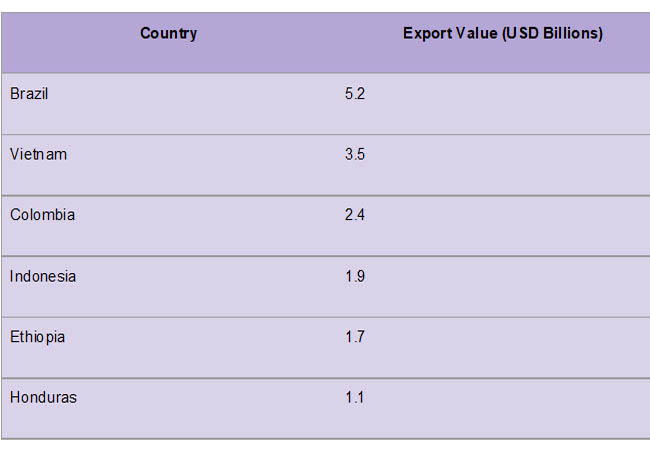
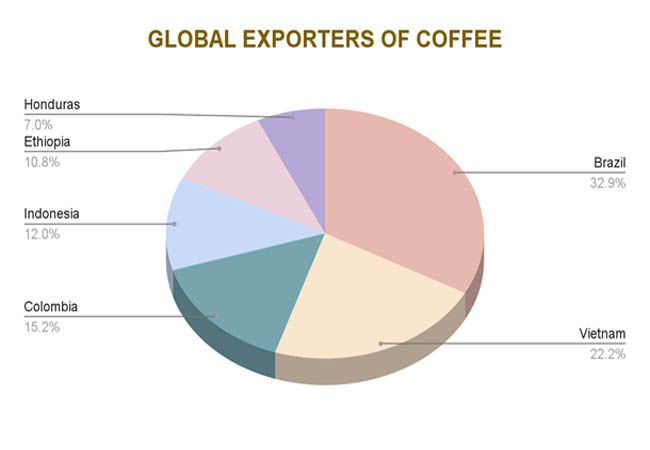
Ethiopia's Principal Coffee-Producing Regions
Ethiopia produces coffee of outstanding quality because of its varied geography, fertile soil, and temperate climate. Ethiopian coffee is grown in many places, each of which contributes a unique flavor profile to the beans, according to a study conducted by Import Globals on Ethiopia Import Export Global Trade Data. The primary coffee-producing regions are as follows:
- Sidama: Distinguished by its delicious and lively acidity, Sidama coffee is known for its washed coffee beans.
- Yirgacheffe: Known for its smooth body, citrusy undertone, and clean, bright, and flowery coffee.
- Harrar: The coffee from Harrar is well-known for being dry-processed and having a strong, earthy flavor with a winey acidity.
- Jimma: Often used in blends, this bean variety has a mellow, earthy flavor.
- Limu: renowned for its medium body, flowery undertones, and mild, well-balanced coffee.
Coffee from each location has unique qualities, but Sidama and Yirgacheffe are especially well-liked by coffee lovers around the world.
The Significance of Coffee in Ethiopia
Ethiopia's economy and culture are dependent on coffee. In terms of the economy, it supports millions of farmers and contributes significantly to Ethiopia's export earnings. Ethiopian culture revolves around coffee, and the coffee ceremony is a representation of community, hospitality, and respect. According to Import Globals' Ethiopia Export Data, it is a national treasure since it is not only an agricultural product but also a deeply embedded part of Ethiopian social life.
Analysis of Ethiopian Coffee Products
Ethiopian coffee is frequently processed by both natural (dry) and washed (wet) processes. While the natural coffee keeps more of the delicious flavor of the coffee cherry, the washed coffee is renowned for its crisp, clean flavor. Both approaches are employed following local customs and consumer tastes, guaranteeing a wide and varied selection of coffee in the international market.
About 95% of Ethiopia's coffee is produced by smallholder farmers, making up the majority of the industry. According to Ethiopia Export Import Global Trade Data, coffee is primarily grown organically using age-old techniques devoid of artificial pesticides and fertilizers. Ethiopia produces coffee in the following categories:
- Garden Coffee: They are manually harvested, tiny plots close to residences.
- Forest Coffee: Wild coffee trees found in natural woodlands are known as "forest coffee".
- Semi-Forest Coffee: Coffee from a semi-forest maintained under partial shade.
- Plantation Coffee: Coffee plantations for huge estates, primarily for export.
Ethiopian coffee beans are processed using either the natural/dry method, which provides fruitier, wine-like characteristics, or the washed/wet method, which produces cleaner, more acidic coffees.
Coffee Quality: Varieties & Types
Because of Ethiopia's distinct environment and age-old farming practices, the country is known for producing high-quality coffee. Arabica and Robusta are the two main varieties of Ethiopian coffee, per a report by Import Globals on Ethiopia Export Data.
- Arabica: Arabica coffee is renowned for its rich scent, low acidity, and smooth, fruity flavor. Yirgacheffe and Sidama are among the places that produce the greatest Arabica coffee.
- Robusta: Grown at lower elevations, robusta coffee has a higher caffeine concentration and a harsher, more bitter flavor.
Strategic Consequences and Trend Forecasting
The international market presents Ethiopia's coffee industry with both opportunities and challenges. Due to its reliance on coffee exports, the nation is susceptible to changes in the price of coffee around the world. However, there is a lot of room for expansion given Ethiopia's distinctive coffee varietals and rising customer demand for premium coffee that is obtained sustainably. Forecast trends show a rise in demand for specialty coffee, which is expected to propel Ethiopia's coffee exports further, according to an analysis by Import Globals on Ethiopia Import Export Data.
Ethiopian Coffee Prices
Weather, production levels, and worldwide supply and demand are some of the variables that might affect coffee prices. According to Import Globals' Ethiopia Import Export Customs Data, Ethiopian coffee, especially Yirgacheffe and Sidama kinds, is typically more expensive than usual because of its superior quality. Prices have increased in recent years as demand for premium, specialty coffee has grown.
In conclusion
Millions of Ethiopians are employed by the country's coffee business, which continues to be a vital component of its economy and a major source of export earnings. Ethiopia's varied coffee-growing regions, each with unique flavor profiles, have contributed to the country's continued status as one of the world's leading coffee exporters, according to Import Globals on Ethiopia Global Trade Data. Ethiopia's coffee export industry is expected to expand in the upcoming years due to the growing demand for premium, sustainable coffee worldwide. Ethiopia will continue to dominate the world coffee market by focusing on quality and utilizing its distinctive coffee tradition.
If you are looking for detailed and up-to-date Ethiopia Export Data, You Can Contact Import Globals.
FAQs
Que. What makes Ethiopian coffee unique?
Ans. Because of its special growth conditions and age-old processing techniques, Ethiopian coffee is renowned for its wide range of flavor profiles, which include fruity and floral as well as earthy and peppery.
Que. Which coffee kinds are most popular in Ethiopia?
Ans. The two primary types of Ethiopian coffee are Robusta, which has a harsher, more bitter flavor, and Arabica, which is smooth and delicious.
Que. Which Ethiopian locations are well-known for producing coffee?
Ans. Ethiopia's main coffee-producing regions are Limu, Jimma, Yirgacheffe, Harrar, and Sidama.
Que. To what extent does Ethiopia's economy depend on coffee?
Ans. Millions of Ethiopians depend on coffee for their livelihoods, making it the nation's most important export and a major contributor to GDP and export earnings.
Que. Where to obtain detailed Ethiopia Export Data?
Ans. Visit www.importglobals.com or email info@importglobals.com for more information on up-to-date Ethiopia Export Data.
